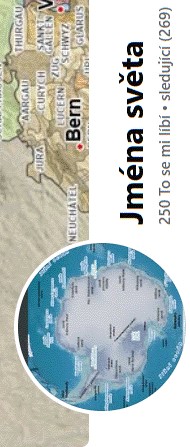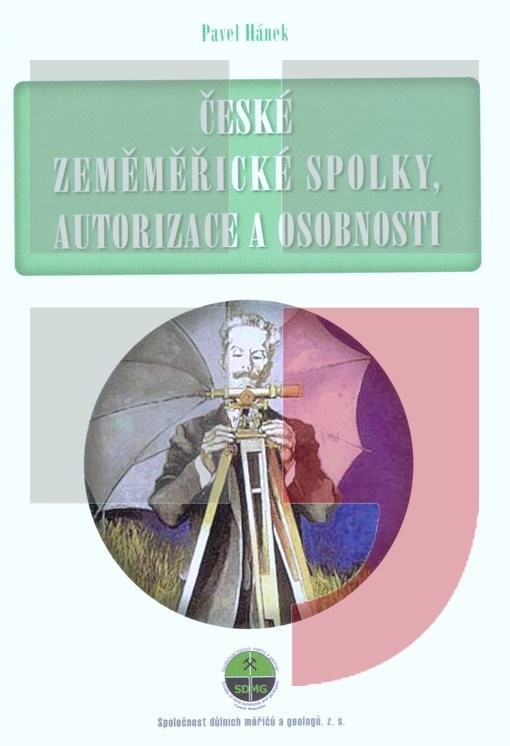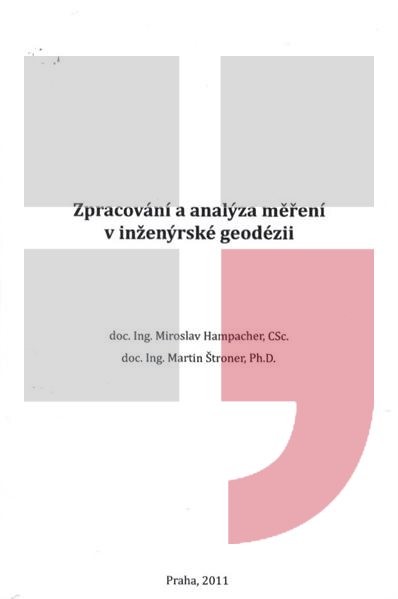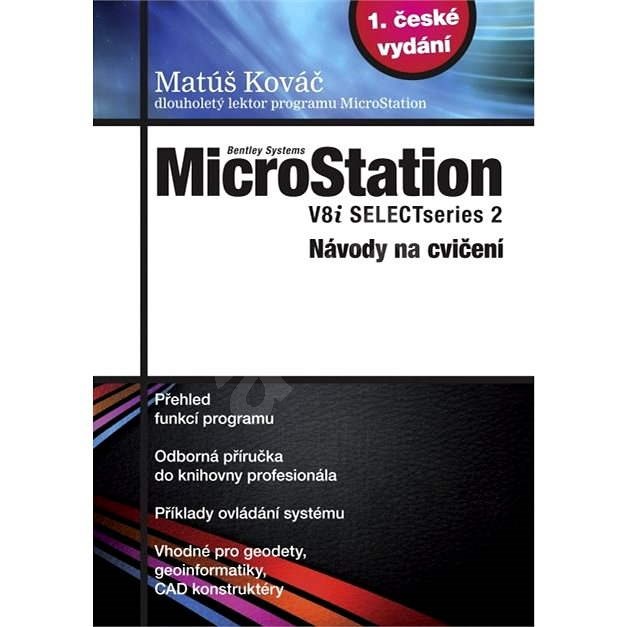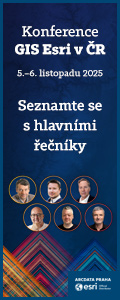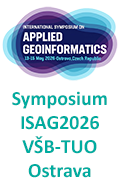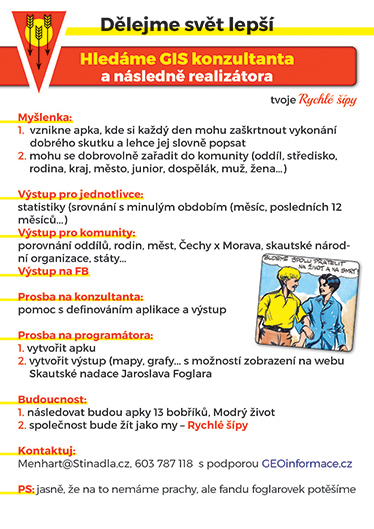zprávy
zdroje zpráv:Přerušení provozu DP a WSDP - 24.5.2016
17.5.2016 9:09 ČÚZK - předpisy a opatření Oznamujeme přerušení provozu Dálkového přístupu i Webových služeb dálkového přístupu. Provoz bude přerušen v úterý 24.5.2016 od 17:00 hodin. Obnovení provozu předpokládáme cca ve 21:00 hodin. Za komplikace tímto způsobené se omlouváme a děkujeme za pochopení.Přerušení provozu DP a WSDP - 24.5.2016
17.5.2016 9:09 Dálkový přístup k údajům KN ČR Oznamujeme přerušení provozu Dálkového přístupu i Webových služeb dálkového přístupu. Provoz bude přerušen v úterý 24.5.2016 od 17:00 hodin. Obnovení provozu předpokládáme cca ve 21:00 hodin. Za komplikace tímto způsobené se omlouváme a děkujeme za pochopení.Přerušení provozu DP a WSDP - 24.5.2016
17.5.2016 9:09 ČÚZK /Aplikace-DP-do-KN/Aplikace-DP-do-KN/Archiv-DP/138978Přerušení provozu DP a WSDP - 24.5.2016
17.5.2016 9:09 ČÚZK - předpisy a opatření Oznamujeme přerušení provozu Dálkového přístupu i Webových služeb dálkového přístupu. Provoz bude přerušen v úterý 24.5.2016 od 17:00 hodin. Obnovení provozu předpokládáme cca ve 21:00 hodin. Za komplikace tímto způsobené se omlouváme a děkujeme za pochopení.Přerušení provozu DP a WSDP - 24.5.2016
17.5.2016 9:09 ČÚZK - předpisy a opatřeníOznamujeme přerušení provozu Dálkového přístupu i Webových služeb dálkového přístupu. Provoz bude přerušen v úterý 24.5.2016 od 17:00 hodin. Obnovení provozu předpokládáme cca ve 21:00 hodin. Za komplikace tímto způsobené se omlouváme a děkujeme za pochopení.
Přerušení provozu DP a WSDP - 24.5.2016
17.5.2016 9:09 ČÚZK - předpisy a opatřeníOznamujeme přerušení provozu Dálkového přístupu i Webových služeb dálkového přístupu. Provoz bude přerušen v úterý 24.5.2016 od 17:00 hodin. Obnovení provozu předpokládáme cca ve 21:00 hodin. Za komplikace tímto způsobené se omlouváme a děkujeme za pochopení.
Přerušení provozu DP a WSDP - 24.5.2016
17.5.2016 9:09 ČÚZK - předpisy a opatření Oznamujeme přerušení provozu Dálkového přístupu i Webových služeb dálkového přístupu. Provoz bude přerušen v úterý 24.5.2016 od 17:00 hodin. Obnovení provozu předpokládáme cca ve 21:00 hodin. Za komplikace tímto způsobené se omlouváme a děkujeme za pochopení.Přerušení provozu DP a WSDP - 24.5.2016
17.5.2016 9:09 ČÚZK - předpisy a opatření Oznamujeme přerušení provozu Dálkového přístupu i Webových služeb dálkového přístupu. Provoz bude přerušen v úterý 24.5.2016 od 17:00 hodin. Obnovení provozu předpokládáme cca ve 21:00 hodin. Za komplikace tímto způsobené se omlouváme a děkujeme za pochopení.20160517-Aplikace Analýzy výškopisu
17.5.2016 8:48 ČÚZK - předpisy a opatřeníAplikace Analýzy výškopisu z produktů Zeměměřického úřadu byla v rámci 18. ročníku soutěže Mapa roku 2015 vyhlášena vítězem kategorie „Digitální kartografické produkty a aplikace na internetu“
20160517-Aplikace Analýzy výškopisu
17.5.2016 8:48 ČÚZK /Aktuality-resort/20160517-Aplikace-Analyzy-vyskopisu20160517-Aplikace Analýzy výškopisu
17.5.2016 8:48 ČÚZK - předpisy a opatření Aplikace Analýzy výškopisu z produktů Zeměměřického úřadu byla v rámci 18. ročníku soutěže Mapa roku 2015 vyhlášena vítězem kategorie „Digitální kartografické produkty a aplikace na internetu“20160517-Aplikace Analýzy výškopisu
17.5.2016 8:48 ČÚZK - předpisy a opatřeníAplikace Analýzy výškopisu z produktů Zeměměřického úřadu byla v rámci 18. ročníku soutěže Mapa roku 2015 vyhlášena vítězem kategorie „Digitální kartografické produkty a aplikace na internetu“
20160517-Aplikace Analýzy výškopisu
17.5.2016 8:48 ČÚZK - předpisy a opatřeníAplikace Analýzy výškopisu z produktů Zeměměřického úřadu byla v rámci 18. ročníku soutěže Mapa roku 2015 vyhlášena vítězem kategorie „Digitální kartografické produkty a aplikace na internetu“
20160517-Aplikace Analýzy výškopisu
17.5.2016 8:48 ČÚZK - předpisy a opatření Aplikace Analýzy výškopisu z produktů Zeměměřického úřadu byla v rámci 18. ročníku soutěže Mapa roku 2015 vyhlášena vítězem kategorie „Digitální kartografické produkty a aplikace na internetu“20160517-Aplikace Analýzy výškopisu
17.5.2016 8:48 ČÚZK - předpisy a opatření Aplikace Analýzy výškopisu z produktů Zeměměřického úřadu byla v rámci 18. ročníku soutěže Mapa roku 2015 vyhlášena vítězem kategorie „Digitální kartografické produkty a aplikace na internetu“20160517-Aplikace Analýzy výškopisu
17.5.2016 8:48 ČÚZK - předpisy a opatření Aplikace Analýzy výškopisu z produktů Zeměměřického úřadu byla v rámci 18. ročníku soutěže Mapa roku 2015 vyhlášena vítězem kategorie „Digitální kartografické produkty a aplikace na internetu“20160517-GaKO-5-2016
17.5.2016 7:55 ČÚZK - předpisy a opatření Aktuální číslo Geodetického a kartografického obzoru (05/2016) ke stažení zde.20160517-GaKO-5-2016
17.5.2016 7:55 ČÚZK - předpisy a opatření Aktuální číslo Geodetického a kartografického obzoru (05/2016) ke stažení zde.20160517-GaKO-5-2016
17.5.2016 7:55 ČÚZK - předpisy a opatření Aktuální číslo Geodetického a kartografického obzoru (05/2016) ke stažení zde.20160517-GaKO-5-2016
17.5.2016 7:55 ČÚZK - předpisy a opatření Aktuální číslo Geodetického a kartografického obzoru (05/2016) ke stažení zde.20160517-GaKO-5-2016
17.5.2016 7:55 ČÚZK - předpisy a opatření Aktuální číslo Geodetického a kartografického obzoru (05/2016) ke stažení zde.20160517-GaKO-5-2016
17.5.2016 7:55 ČÚZK - předpisy a opatření Aktuální číslo Geodetického a kartografického obzoru (05/2016) ke stažení zde.20160517-GaKO-5-2016
17.5.2016 7:55 ČÚZK - předpisy a opatření Aktuální číslo Geodetického a kartografického obzoru (05/2016) ke stažení zde.Praha a celosvětové akce v oboru zeměměřictví
17.5.2016 7:07 Zeměměřič Na blíící se 3. celosvětové akci v Praze XXIII. kongresu Mezinárodní společnosti pro fotogrammetrii a dálkový průzkum (ISPRS) ve dnech 12. 19. 7. 2016 je zajímavé...INSPIRE stahovací služba pro téma Územní správní jednotky (AU)
17.5.2016 2:00 Cenia - Katalog metadat ČR - INSPIRE ([ABSTRAKT_CZ_AU_DOWNLOAD])Nová družice TeLEOS-1 na oběžné dráze
17.5.2016 2:00 Gisat Indická čtyřstupňová raketa PSLV odstartovala ke svému 32. letu dne 16. prosince 2015 z kosmodromu Sriharikota na východním pobřeží Indie. Družice TeLEOS-1 bude pořizovat panchromatické (tj. černobílé) snímky zemského povrchu v rozlišení 1 metr.INSPIRE téma Parcely (CP)
17.5.2016 2:00 Cenia - Katalog metadat ČR - INSPIRE Data odpovídají směrnici INSPIRE pro téma katastrální parcely (CP). Vychází z katastrální mapy, která je závazným státním mapovým dílem velkého měřítka, obsahuje body polohového bodového pole, polohopis a popis a může mít formu digitální mapy, analogové mapy nebo digitalizované mapy. Data publikovaná v rámci INSPIRE obsahují pouze katastrální území (pro celou Českou Republiku) a parcely a jejich hranice z území, kde je digitální mapa (k 16. 05. 2016 je to 83,38% území České republiky, t.j. 65 761,12km2). Více katastrální zákon 256/2013 Sb., katastrální vyhláška č.357/2013 Sb. v platném znění a INSPIRE Data Specification on Cadastral Parcels v 3.0.1.Barevný letecký snímek 2015 s rozlišením 0,25 m
17.5.2016 2:00 Cenia - Katalog metadat ČR - INSPIRE Barevná ortofotomapa Plzeňského kraje s velikostí pixelu (rozlišení 0,25 metrů). Snímkováno v roce 2015.INSPIRE prohlížecí služba pro téma Územní správní jednotky (AU)
17.5.2016 2:00 Cenia - Katalog metadat ČR - INSPIRE ([ABSTRAKT_CZ_AU_VIEW])INSPIRE téma Adresy (AD)
17.5.2016 2:00 Cenia - Katalog metadat ČR - INSPIRE Data odpovídají směrnici INSPIRE pro téma adresy (AD). Vychází především z projektu RÚIAN (Registr územní identifikace, adres a nemovitostí), který je součástí základních registrů České Republiky a obsahuje informace o územní identifikaci, adresách a nemovitostech. Data publikovaná v rámci INSPIRE obsahují pouze adresní místa a jejich komponenty, kterými jsou stát, obec, část obce, městský obvod v Praze (MOP), městký obvod/městská část (MO/MČ), ulice a pošta a to na území celé České Republiky. Obsahují rozvněž geometrii, která určuje definiční bod adresního místa. V datové sadě nění uvedeno 2,72%, t.j. 78889 adresních míst (k 16. 05. 2016), protože neobsahují definiční bod, podle kterého by je bylo možné prostorově určit. Více v zákoně č. 111/2009 Sb., o základních registrech a ve vyhlášce č. 359/2011 Sb., o základním registru územní identifikace, adres a nemovitostí v platných zněních a INSPIRE Data Specification on Addresses v 3.0.1 z 26.4.2010.Barevný letecký snímek 2013 s rozlišením 0,25 m
17.5.2016 2:00 Cenia - Katalog metadat ČR - INSPIRE Barevná ortofotomapa Plzeňského kraje s velikostí pixelu (rozlišení 0,25 metrů). Snímkováno v roce 2013.Barevný letecký snímek 2011 s rozlišením 0,25 m
17.5.2016 2:00 Cenia - Katalog metadat ČR - INSPIRE Barevná ortofotomapa Plzeňského kraje s velikostí pixelu (rozlišení 0,25 metrů). Snímkováno v roce 2011.Barevný letecký snímek 2011 s rozlišením 0,2 m
17.5.2016 2:00 Cenia - Katalog metadat ČR - INSPIRE Barevná ortofotomapa Plzeňského kraje s velikostí pixelu (rozlišení 0,2 metrů). Snímkováno v roce 2011.INSPIRE téma Budovy (BU)
17.5.2016 2:00 Cenia - Katalog metadat ČR - INSPIRE Data odpovídají směrnici INSPIRE pro téma budovy (BU). Data pochází částečně z projektu RÚIAN (Registr územní identifikace, adres a nemovitostí), který je součástí základních registrů České Republiky a obsahuje informace o územní identifikaci, adresách a nemovitostech, a částečně z ISKN (Informační systém katastru nemovistostí). Zdrojem informací o budovách v ISKN je objekt Stavba, v RÚIAN je to Stavební objekt. Většina Staveb je zároveň Stavebními objekty, ale jsou případy, kdy tomu tak není. Kromě Budov datová sada obsahuje i části budov, které jsou pro potřeby INSPIRE vyjádřeny vchody z RÚIAN. Vchody obsahují informace o počtu podlaží, technickoekonomických atributech apod. Datová sada pokrývá celé území české republiky. V datové sadě není uvedeno 2,20%, t.j. 92350 budov (k 16. 05. 2016), protože neobsahují definiční bod ani polygon. Více v zákoně č. 111/2009 Sb., o základních registrech, ve vyhlášce č. 359/2011 Sb., o základním registru územní identifikace, adres a nemovitostí v platných zněních, v zákoně 256/2013 Sb., o katastru nemovitostí, v katastrální vyhlášce č. 357/2013 Sb. v platném znění a INSPIRE Data Specification on Buildings v 3.0 z 13.12.2013.Oznámení o vyhlášení výběrového řízení na služební místo rada / odborný rada odboru řízení privatizace a převodu majetku, oddělení realizace převodů
17.5.2016 0:00 Státní pozemkový úřad Ústřední ředitelka Státního pozemkového úřadu, jako služební orgán příslušný podle § 10 odst. 1 písm. f) zákona č. 234/2014 Sb., o státní službě (dále jen „zákon“), vyhlašuje výběrové řízení.Vedoucí oddělení spisové služby, odbor vnitřní správy
17.5.2016 0:00 Státní pozemkový úřad Státní pozemkový úřad přijme zaměstnance na pozici vedoucí oddělení spisové služby, odbor vnitřní správy.Vedoucí oddělení obnovy katastrálního operátu Katastrálního úřadu pro Zlínský kraj
16.5.2016 15:49 ČÚZK - předpisy a opatření Katastrální úřad pro Zlínský kraj vypisuje výberové rízení na místo Vedoucí oddělení obnovy katastrálního operátu Katastrálního úřadu pro Zlínský krajVedoucí oddělení obnovy katastrálního operátu Katastrálního úřadu pro Zlínský kraj
16.5.2016 15:49 ČÚZK - předpisy a opatření Katastrální úřad pro Zlínský krajvypisuje výberové rízení na místo
Vedoucí oddělení obnovy katastrálního operátu Katastrálního úřadu pro Zlínský kraj
Vedoucí oddělení obnovy katastrálního operátu Katastrálního úřadu pro Zlínský kraj
16.5.2016 15:49 ČÚZK - předpisy a opatření Katastrální úřad pro Zlínský kraj vypisuje výberové rízení na místo Vedoucí oddělení obnovy katastrálního operátu Katastrálního úřadu pro Zlínský krajVedoucí oddělení obnovy katastrálního operátu Katastrálního úřadu pro Zlínský kraj
16.5.2016 15:49 ČÚZK - předpisy a opatření Katastrální úřad pro Zlínský kraj vypisuje výberové rízení na místo Vedoucí oddělení obnovy katastrálního operátu Katastrálního úřadu pro Zlínský krajVedoucí oddělení obnovy katastrálního operátu Katastrálního úřadu pro Zlínský kraj
16.5.2016 15:49 ČÚZK - volná místa Katastrální úřad pro Zlínský kraj,Vedoucí oddělení obnovy katastrálního operátu Katastrálního úřadu pro Zlínský kraj
16.5.2016 15:49 ČÚZK /Urady/Katastralni-urady/Katastralni-urady/Katastralni-urad-pro-Zlinsky-kraj/Uredni-deska/Oznameni-a-jina-uredni-sdeleni/Volna-mista/Vedouci-oddeleni-obnovy-katastralniho-operatu-KataVedoucí oddělení obnovy katastrálního operátu Katastrálního úřadu pro Zlínský kraj
16.5.2016 15:49 ČÚZK - předpisy a opatření Katastrální úřad pro Zlínský krajVedoucí oddělení obnovy katastrálního operátu Katastrálního úřadu pro Zlínský kraj
16.5.2016 15:49 ČÚZK - volná místa Katastrální úřad pro Zlínský kraj, vypisuje výběrové řízení na místo Vedoucí oddělení obnovy katastrálního operátu Katastrálního úřadu pro Zlínský krajVedoucí oddělení metodiky a kontroly Katastrálního úřadu pro Zlínský kraj
16.5.2016 15:47 ČÚZK - volná místa Katastrální úřad pro Zlínský kraj, vypisuje výběrové řízení na místo Vedoucí oddělení metodiky a kontroly Katastrálního úřadu pro Zlínský krajVedoucí oddělení metodiky a kontroly Katastrálního úřadu pro Zlínský kraj
16.5.2016 15:47 ČÚZK - předpisy a opatření Katastrální úřad pro Zlínský kraj vypisuje výberové rízení na místo Vedoucí oddělení metodiky a kontroly Katastrálního úřadu pro Zlínský krajVedoucí oddělení metodiky a kontroly Katastrálního úřadu pro Zlínský kraj
16.5.2016 15:47 ČÚZK - předpisy a opatření Katastrální úřad pro Zlínský kraj vypisuje výberové rízení na místo Vedoucí oddělení metodiky a kontroly Katastrálního úřadu pro Zlínský krajVedoucí oddělení metodiky a kontroly Katastrálního úřadu pro Zlínský kraj
16.5.2016 15:47 ČÚZK - předpisy a opatření Katastrální úřad pro Zlínský kraj vypisuje výberové rízení na místo Vedoucí oddělení metodiky a kontroly Katastrálního úřadu pro Zlínský krajVedoucí oddělení metodiky a kontroly Katastrálního úřadu pro Zlínský kraj
16.5.2016 15:47 ČÚZK - předpisy a opatření Katastrální úřad pro Zlínský krajVedoucí oddělení metodiky a kontroly Katastrálního úřadu pro Zlínský kraj
16.5.2016 15:47 ČÚZK /Urady/Katastralni-urady/Katastralni-urady/Katastralni-urad-pro-Zlinsky-kraj/Uredni-deska/Oznameni-a-jina-uredni-sdeleni/Volna-mista/Vedouci-oddeleni-metodiky-a-kontroly-KatastralnihoVedoucí oddělení metodiky a kontroly Katastrálního úřadu pro Zlínský kraj
16.5.2016 15:47 ČÚZK - volná místa Katastrální úřad pro Zlínský kraj,Vedoucí oddělení metodiky a kontroly Katastrálního úřadu pro Zlínský kraj
16.5.2016 15:47 ČÚZK - předpisy a opatření Katastrální úřad pro Zlínský krajvypisuje výberové rízení na místo
Vedoucí oddělení metodiky a kontroly Katastrálního úřadu pro Zlínský kraj
Vedoucí personálního oddělení Katastrálního úřadu pro Zlínský kraj
16.5.2016 15:46 ČÚZK - předpisy a opatření Katastrální úřad pro Zlínský krajvypisuje výberové rízení na místo
Vedoucí personálního oddělení Katastrálního úřadu pro Zlínský kraj
Vedoucí personálního oddělení Katastrálního úřadu pro Zlínský kraj
16.5.2016 15:46 ČÚZK - předpisy a opatření Katastrální úřad pro Zlínský krajvypisuje výberové rízení na místo
Vedoucí personálního oddělení Katastrálního úřadu pro Zlínský kraj
Vedoucí personálního oddělení Katastrálního úřadu pro Zlínský kraj
16.5.2016 15:46 ČÚZK - volná místa Katastrální úřad pro Zlínský kraj, vypisuje výběrové řízení na místo Vedoucí personálního oddělení Katastrálního úřadu pro Zlínský krajVedoucí personálního oddělení Katastrálního úřadu pro Zlínský kraj
16.5.2016 15:46 ČÚZK /Urady/Katastralni-urady/Katastralni-urady/Katastralni-urad-pro-Zlinsky-kraj/Uredni-deska/Oznameni-a-jina-uredni-sdeleni/Volna-mista/Vedouci-personalniho-oddeleni-Katastralniho-uraduVedoucí personálního oddělení Katastrálního úřadu pro Zlínský kraj
16.5.2016 15:46 ČÚZK - předpisy a opatření Katastrální úřad pro Zlínský kraj vypisuje výberové rízení na místo Vedoucí personálního oddělení Katastrálního úřadu pro Zlínský krajVedoucí personálního oddělení Katastrálního úřadu pro Zlínský kraj
16.5.2016 15:46 ČÚZK - předpisy a opatření Katastrální úřad pro Zlínský kraj vypisuje výberové rízení na místo Vedoucí personálního oddělení Katastrálního úřadu pro Zlínský krajVedoucí personálního oddělení Katastrálního úřadu pro Zlínský kraj
16.5.2016 15:46 ČÚZK - předpisy a opatření Katastrální úřad pro Zlínský kraj vypisuje výberové rízení na místo Vedoucí personálního oddělení Katastrálního úřadu pro Zlínský krajVedoucí personálního oddělení Katastrálního úřadu pro Zlínský kraj
16.5.2016 15:46 ČÚZK - volná místa Katastrální úřad pro Zlínský kraj,Vedoucí personálního oddělení Katastrálního úřadu pro Zlínský kraj
16.5.2016 15:46 ČÚZK - předpisy a opatření Katastrální úřad pro Zlínský krajVedoucí ekonomicko-správního oddělení Katastrálního úřadu pro Zlínský kraj
16.5.2016 15:44 ČÚZK - volná místa Katastrální úřad pro Zlínský kraj, vypisuje výběrové řízení na místo Vedoucí ekonomicko-správního oddělení Katastrálního úřadu pro Zlínský krajVedoucí ekonomicko-správního oddělení Katastrálního úřadu pro Zlínský kraj
16.5.2016 15:44 ČÚZK - předpisy a opatření Katastrální úřad pro Zlínský krajvypisuje výberové rízení na místo
Vedoucí ekonomicko-správního oddělení Katastrálního úřadu pro Zlínský kraj
Vedoucí ekonomicko-správního oddělení Katastrálního úřadu pro Zlínský kraj
16.5.2016 15:44 ČÚZK - předpisy a opatření Katastrální úřad pro Zlínský kraj vypisuje výberové rízení na místo Vedoucí ekonomicko-správního oddělení Katastrálního úřadu pro Zlínský krajVedoucí ekonomicko-správního oddělení Katastrálního úřadu pro Zlínský kraj
16.5.2016 15:44 ČÚZK - předpisy a opatření Katastrální úřad pro Zlínský kraj vypisuje výberové rízení na místo Vedoucí ekonomicko-správního oddělení Katastrálního úřadu pro Zlínský krajVedoucí ekonomicko-správního oddělení Katastrálního úřadu pro Zlínský kraj
16.5.2016 15:44 ČÚZK - předpisy a opatření Katastrální úřad pro Zlínský krajvypisuje výberové rízení na místo
Vedoucí ekonomicko-správního oddělení Katastrálního úřadu pro Zlínský kraj
Vedoucí ekonomicko-správního oddělení Katastrálního úřadu pro Zlínský kraj
16.5.2016 15:37 ČÚZK - předpisy a opatření Katastrální úřad pro Zlínský krajVedoucí ekonomicko-správního oddělení Katastrálního úřadu pro Zlínský kraj
16.5.2016 15:37 ČÚZK - volná místa Katastrální úřad pro Zlínský kraj,Vedoucí ekonomicko-správního oddělení Katastrálního úřadu pro Zlínský kraj
16.5.2016 15:37 ČÚZK /Urady/Katastralni-urady/Katastralni-urady/Katastralni-urad-pro-Zlinsky-kraj/Uredni-deska/Oznameni-a-jina-uredni-sdeleni/Volna-mista/Vedouci-ekonomicko-spravniho-oddeleni-Katastralnih20160516 - Vystava -Zajímavá místa ČR
16.5.2016 15:26 ČÚZK /Urady/Zememericky-urad/O-uradu/Aktuality/20160516-Vystava-Zajimava-mista-CR20160516 - Vystava -Zajímavá místa ČR
16.5.2016 15:26 Zeměměřický úřad Výstava Zajímavá místa České republiky na produktech Zeměměřického úřaduOd 16. května se koná výstava na téma Zajímavá místa České republiky na produktech Zeměměřického úřadu v budově zeměměřických a katastrálních úřadů - přepážková hala.
Další informace naleznete v pozvánce.
20160516 - Vystava -Zajímavá místa ČR
16.5.2016 15:26 ČÚZK - předpisy a opatření Výstava Zajímavá místa České republiky na produktech Zeměměřického úřaduOd 16. května se koná výstava na téma Zajímavá místa České republiky na produktech Zeměměřického úřadu v budově zeměměřických a katastrálních úřadů - přepážková hala.
Další informace naleznete v pozvánce.
20160516 - Vystava -Zajímavá místa ČR
16.5.2016 15:26 ČÚZK - předpisy a opatření Výstava Zajímavá místa České republiky na produktech Zeměměřického úřaduOd 16. května se koná výstava na téma Zajímavá místa České republiky na produktech Zeměměřického úřadu v budově zeměměřických a katastrálních úřadů - přepážková hala.
Další informace naleznete v pozvánce.
20160516 - Vystava -Zajímavá místa ČR
16.5.2016 15:26 ČÚZK - předpisy a opatření Výstava Zajímavá místa České republiky na produktech Zeměměřického úřaduOd 16. května se koná výstava na téma Zajímavá místa České republiky na produktech Zeměměřického úřadu v budově zeměměřických a katastrálních úřadů - přepážková hala.
Další informace naleznete v pozvánce.
20160516 - Vystava -Zajímavá místa ČR
16.5.2016 15:26 Zeměměřický úřad Výstava Zajímavá místa České republiky na produktech Zeměměřického úřaduOd 16. května se koná výstava na téma Zajímavá místa České republiky na produktech Zeměměřického úřadu v budově zeměměřických a katastrálních úřadů - přepážková hala.
Další informace naleznete v pozvánce.
20160516 - Vystava -Zajímavá místa ČR
16.5.2016 15:26 ČÚZK - předpisy a opatření Výstava Zajímavá místa České republiky na produktech Zeměměřického úřaduOd 16. května se koná výstava na téma Zajímavá místa České republiky na produktech Zeměměřického úřadu v budově zeměměřických a katastrálních úřadů - přepážková hala.
Další informace naleznete v pozvánce.
20160516 - Vystava -Zajímavá místa ČR
16.5.2016 15:26 ČÚZK - předpisy a opatření Výstava Zajímavá místa České republiky na produktech Zeměměřického úřaduOd 16. května se koná výstava na téma Zajímavá místa České republiky na produktech Zeměměřického úřadu v budově zeměměřických a katastrálních úřadů - přepážková hala.
Další informace naleznete v pozvánce.
Podoba metanového moře na Titanu
16.5.2016 14:59 Český Kosmický PortálNejvětší měsíc planety Saturn je pokrytý moři a jezery z tekutých hydrokarbonátů - a jak bylo odhaleno, jedno z moří je plné čistého metanu. Jeho dno je pokryto vrstvou na organické látky bohatého materiálu. A vlastní moře je zřejmě obklopeno močály.
Bentley Systems ohlásila příjem přihláek do soutěe Be Inspired 2016 oceňující výjimečnou práci v oblasti infrastruktury
16.5.2016 13:30 Zeměměřič Celosvětový program oslavuje nejvýznačnějí světové pokroky v oblastech projektování, výstavby a provozování infrastruktury. Uzávěrka přihláek je 30. května 2016.odborný referent v oddělení dokumentace KN
16.5.2016 13:25 ČÚZK - předpisy a opatřeníOznámení o vyhlášení výběrového řízení na služební místo odborný referent v oddělení dokumentace KN na Katastrálním pracovišti Jihlava, místo výkonu služby Jihlava zde.
odborný referent v oddělení dokumentace KN
16.5.2016 13:25 ČÚZK /Urady/Katastralni-urady/Katastralni-urady/Katastralni-urad-pro-Vysocinu/Katastralni-pracoviste/KP-Jihlava/O-uradu/Aktuality/odborny-referent-v-oddeleni-dokumentace-KNodborný referent v oddělení dokumentace KN
16.5.2016 13:25 ČÚZK - předpisy a opatřeníOznámení o vyhlášení výběrového řízení na služební místo odborný referent v oddělení dokumentace KN na Katastrálním pracovišti Jihlava, místo výkonu služby Jihlava zde.
odborný referent v oddělení dokumentace KN
16.5.2016 13:25 ČÚZK - předpisy a opatřeníOznámení o vyhlášení výběrového řízení na služební místo odborný referent v oddělení dokumentace KN na Katastrálním pracovišti Jihlava, místo výkonu služby Jihlava zde.
odborný referent v oddělení dokumentace KN
16.5.2016 13:25 ČÚZK - předpisy a opatřeníOznámení o vyhlášení výběrového řízení na služební místo odborný referent v oddělení dokumentace KN na Katastrálním pracovišti Jihlava, místo výkonu služby Jihlava zde.
odborný referent v oddělení dokumentace KN
16.5.2016 13:25 ČÚZK - předpisy a opatřeníOznámení o vyhlášení výběrového řízení na služební místo odborný referent v oddělení dokumentace KN na Katastrálním pracovišti Jihlava, místo výkonu služby Jihlava zde.
odborný referent v oddělení právní vztahy k nemovitostem
16.5.2016 13:24 ČÚZK - předpisy a opatřeníOznámení o vyhlášení výběrového řízení na služební místo odborný referent v oddělení právní vztahy k nemovitostem na Katastrálním pracovišti Jihlava, místo výkonu služby Jihlava zde.
odborný referent v oddělení právní vztahy k nemovitostem
16.5.2016 13:24 ČÚZK - předpisy a opatřeníOznámení o vyhlášení výběrového řízení na služební místo odborný referent v oddělení právní vztahy k nemovitostem na Katastrálním pracovišti Jihlava, místo výkonu služby Jihlava zde.
odborný referent v oddělení právní vztahy k nemovitostem
16.5.2016 13:24 ČÚZK - předpisy a opatřeníOznámení o vyhlášení výběrového řízení na služební místo odborný referent v oddělení právní vztahy k nemovitostem na Katastrálním pracovišti Jihlava, místo výkonu služby Jihlava zde.
odborný referent v oddělení právní vztahy k nemovitostem
16.5.2016 13:24 ČÚZK /Urady/Katastralni-urady/Katastralni-urady/Katastralni-urad-pro-Vysocinu/Katastralni-pracoviste/KP-Jihlava/O-uradu/Aktuality/odborny-referent-v-oddeleni-pravni-vztahy-k-nemoviodborný referent v oddělení právní vztahy k nemovitostem
16.5.2016 13:24 ČÚZK - předpisy a opatřeníOznámení o vyhlášení výběrového řízení na služební místo odborný referent v oddělení právní vztahy k nemovitostem na Katastrálním pracovišti Jihlava, místo výkonu služby Jihlava zde.
odborný referent v oddělení právní vztahy k nemovitostem
16.5.2016 13:24 ČÚZK - předpisy a opatřeníOznámení o vyhlášení výběrového řízení na služební místo odborný referent v oddělení právní vztahy k nemovitostem na Katastrálním pracovišti Jihlava, místo výkonu služby Jihlava zde.
Odborný referent v oddělení dokumentace KN.
16.5.2016 13:22 ČÚZK - předpisy a opatření Katastrální úřad pro Vysočinu Katastrální pracoviště Jihlava vypisuje výberové rízení na místo Odborný referent v oddělení dokumentace KN.Odborný referent v oddělení dokumentace KN.
16.5.2016 13:22 ČÚZK - předpisy a opatření Katastrální úřad pro Vysočinu Katastrální pracoviště Jihlava vypisuje výberové rízení na místo Odborný referent v oddělení dokumentace KN.Odborný referent v oddělení dokumentace KN.
16.5.2016 13:22 ČÚZK - volná místa Katastrální úřad pro Vysočinu, Katastrální pracoviště JihlavaOdborný referent v oddělení dokumentace KN.
16.5.2016 13:22 ČÚZK /Urady/Katastralni-urady/Katastralni-urady/Katastralni-urad-pro-Vysocinu/Uredni-deska/Oznameni-a-jina-uredni-sdeleni/Volna-mista/Odborny-referent-v-oddeleni-dokumentace-KNOdborný referent v oddělení dokumentace KN.
16.5.2016 13:22 ČÚZK - předpisy a opatření Katastrální úřad pro Vysočinu Katastrální pracoviště JihlavaOdborný referent v oddělení dokumentace KN.
16.5.2016 13:22 ČÚZK - předpisy a opatření Katastrální úřad pro Vysočinu Katastrální pracoviště Jihlava vypisuje výberové rízení na místo Odborný referent v oddělení dokumentace KN.Odborný referent v oddělení dokumentace KN.
16.5.2016 13:22 ČÚZK - předpisy a opatření Katastrální úřad pro Vysočinu Katastrální pracoviště Jihlavavypisuje výberové rízení na místo
Odborný referent v oddělení dokumentace KN.
Odborný referent v oddělení dokumentace KN.
16.5.2016 13:22 ČÚZK - předpisy a opatření Katastrální úřad pro Vysočinu Katastrální pracoviště Jihlavavypisuje výberové rízení na místo
Odborný referent v oddělení dokumentace KN.
Odborný referent v oddělení dokumentace KN.
16.5.2016 13:22 ČÚZK - volná místa Katastrální úřad pro Vysočinu, Katastrální pracoviště Jihlava vypisuje výběrové řízení na místo Odborný referent v oddělení dokumentace KN.Odborný referent v oddělení právní vztahy k nemovitostem.
16.5.2016 13:19 ČÚZK - volná místa Katastrální úřad pro Vysočinu, Katastrální pracoviště JihlavaOdborný referent v oddělení právní vztahy k nemovitostem.
16.5.2016 13:19 ČÚZK - předpisy a opatření Katastrální úřad pro Vysočinu Katastrální pracoviště Jihlavavypisuje výberové rízení na místo
Odborný referent v oddělení právní vztahy k nemovitostem.
Odborný referent v oddělení právní vztahy k nemovitostem.
16.5.2016 13:19 ČÚZK - předpisy a opatření Katastrální úřad pro Vysočinu Katastrální pracoviště Jihlava vypisuje výberové rízení na místo Odborný referent v oddělení právní vztahy k nemovitostem.Odborný referent v oddělení právní vztahy k nemovitostem.
16.5.2016 13:19 ČÚZK /Urady/Katastralni-urady/Katastralni-urady/Katastralni-urad-pro-Vysocinu/Uredni-deska/Oznameni-a-jina-uredni-sdeleni/Volna-mista/Odborny-referent-v-oddeleni-pravni-vztahy-k-nemoviOdborný referent v oddělení právní vztahy k nemovitostem.
16.5.2016 13:19 ČÚZK - předpisy a opatření Katastrální úřad pro Vysočinu Katastrální pracoviště JihlavaOdborný referent v oddělení právní vztahy k nemovitostem.
16.5.2016 13:19 ČÚZK - předpisy a opatření Katastrální úřad pro Vysočinu Katastrální pracoviště Jihlavavypisuje výberové rízení na místo
Odborný referent v oddělení právní vztahy k nemovitostem.



